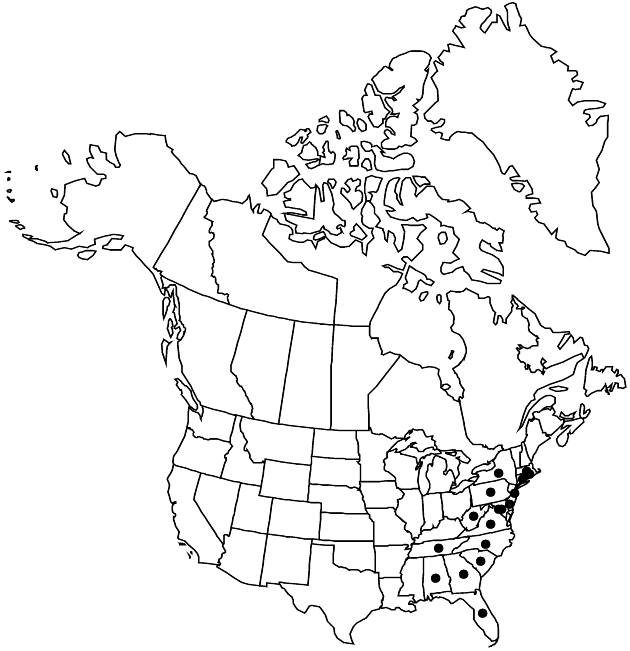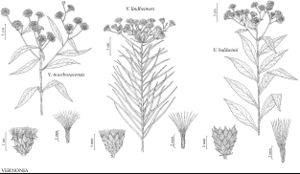Vernonia noveboracensis
Fl. Bor.-Amer. 2: 95. 1803.
Plants 8–12 (–20) dm. Stems puberulent, glabrescent. Leaves mostly cauline; blades ± lanceolate, 9–15 (–25+) cm × 15–45 (–60+) mm, l/w = (3.3–) 4–6+, abaxially scabrellous, tomentose, or pannose, resin-gland-dotted, adaxially scabrellous, often resin-gland-dotted. Heads in corymbiform to paniculiform arrays. Peduncles 2–35 mm. Involucres ± hemispheric, 6–10 × 7–10 mm. Phyllaries 35–60+ in 4–6+ series, sparsely tomentulose, glabrescent, margins ciliolate, the outer lanceolate to subulate, 1–3 mm, inner oblong, 7–9+ mm, tips subulate to filiform. Florets 30–45 (–65). Cypselae 3.5–4+ mm; pappi fuscous to purplish, outer scales 20, 0.2–0.6+ mm, contrasting with 30–40+, 5–7+ mm inner bristles. 2n = 34.
Phenology: Flowering Aug–Oct.
Habitat: Abandoned fields, marshes, roadsides
Elevation: 10–600 m
Distribution

Ala., Conn., Del., D.C., Fla., Ga., Md., Mass., N.J., N.Y., N.C., Pa., R.I., S.C., Tenn., Va., W.Va.
Discussion
Selected References
None.
Lower Taxa
"dm" is not declared as a valid unit of measurement for this property."dm" is not declared as a valid unit of measurement for this property."dm" is not declared as a valid unit of measurement for this property.
